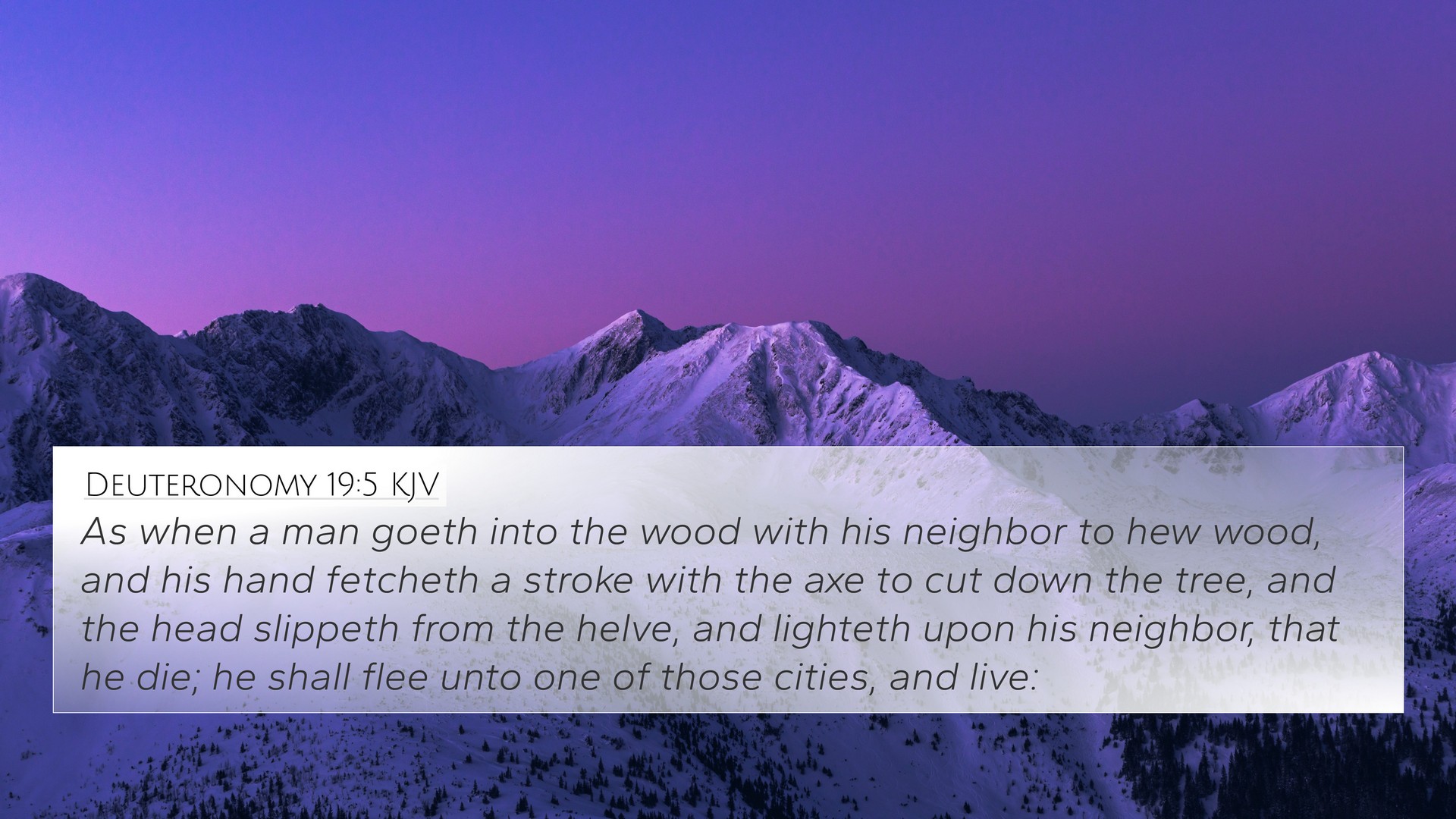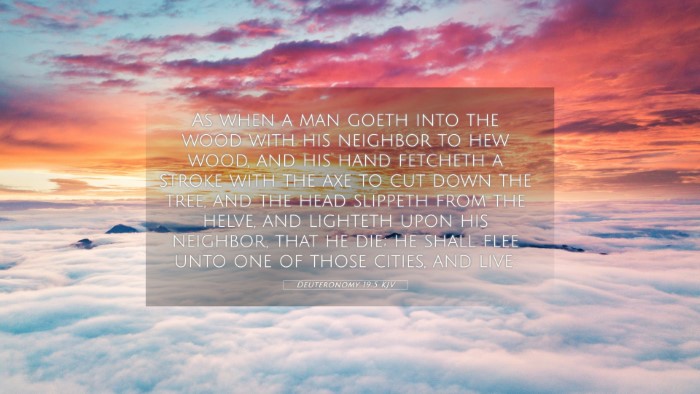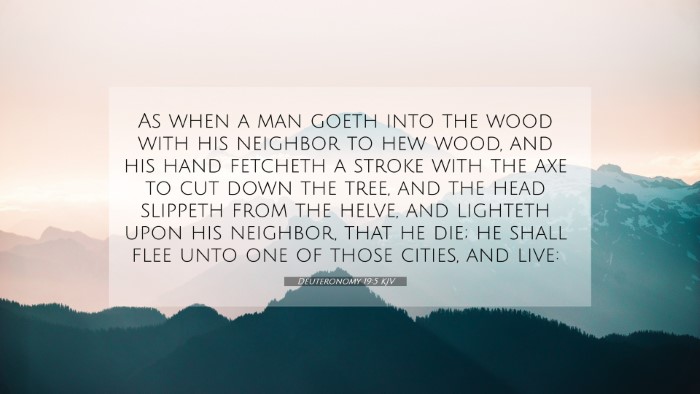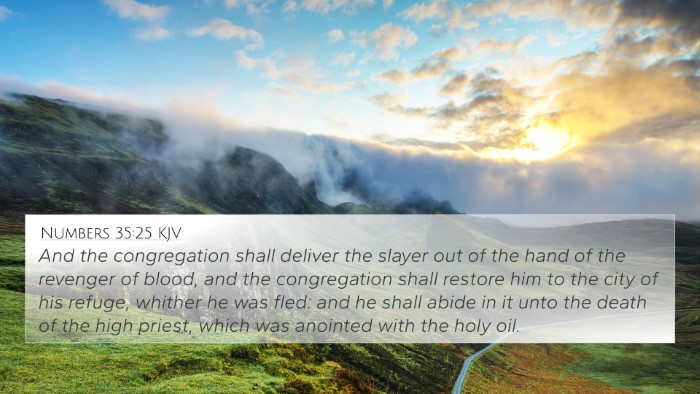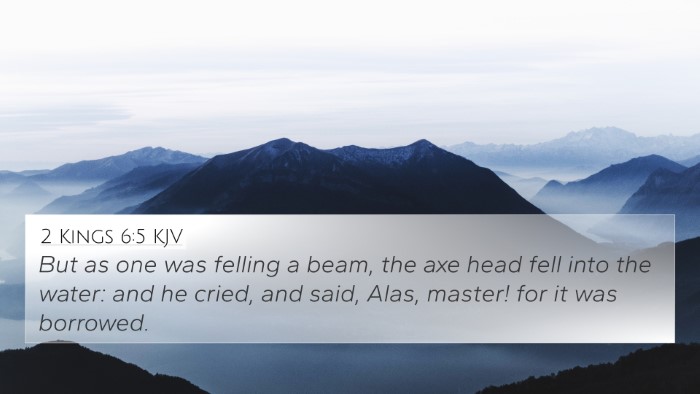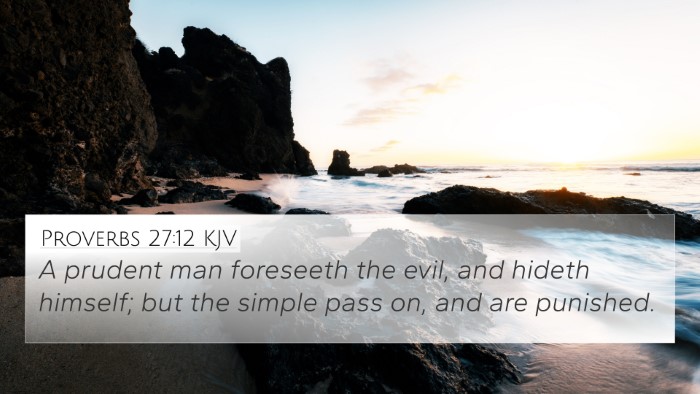Understanding Deuteronomy 19:5
Verse: "As when a man goes into the wood with his neighbor to cut wood, and his hand swings the axe to cut down the tree, and the head slips from the handle and strikes his neighbor, so that he dies; he shall flee to one of those cities and live." (Deuteronomy 19:5, ESV)
Overview of Deuteronomy 19:5
The verse describes a specific scenario where an accidental death occurs during a seemingly harmless activity. It emphasizes the provision for unintentional manslaughter and the importance of seeking refuge in designated cities. This reflects broader principles of justice and mercy in God's law.
Key Themes
- Accidental Death: The significance of unintentional injuries and God’s allowance for human error.
- Refuge Cities: The cities of refuge were established for protection for those who committed unintentional deaths.
- Justice and Mercy: The balance between justice for the victim’s family and mercy for the accidental offender.
Commentary Insights
Matthew Henry: Henry highlights that the law is compassionate, providing a mechanism for those who cause death unintentionally. The scenario elucidated in Deuteronomy 19:5 illustrates human fallibility and the need for a system that allows the accused to have recourse.
Albert Barnes: Barnes notes that this law highlights the importance of intent in legal matters. There is a distinction between intentional murder and accidental killing which warrants different treatment under the law. He underscores that this system was essential for maintaining societal balance and preventing cycles of vengeance.
Adam Clarke: Clarke elaborates on the cultural and historical context of the verse, indicating that the axe represented a common tool of the day. His insights suggest that such laws were intended to prevent escalation of violence and ensure that communities remain compassionate even in difficult situations.
Connections Between Bible Verses
Deuteronomy 19:5 has several points of connection with other verses throughout the Bible that inform our understanding of justice, mercy, and community protection.
Cross-References
- Numbers 35:11-15: Discusses cities of refuge for those who kill unintentionally.
- Exodus 21:12-14: Outlines the laws pertaining to murder and manslaughter.
- Joshua 20:1-9: Details the establishment of the cities of refuge.
- Proverbs 24:16: Talks about the just nature of God who protects the righteous.
- 1 Timothy 1:9: Indicates the importance of knowing the law for the purpose of justice.
- Matthew 5:21-22: Jesus’ teachings on murder and anger reveal deeper heart issues associated with violence.
- Romans 13:4: The authority of government in administering justice reflects God’s order.
Exploring Thematic Connections
This verse opens pathways to a broader theological understanding of how God’s law governs society. The intertwining of justice (as seen in the concepts of cities of refuge) and mercy is a recurring theme throughout the Bible.
Inter-Biblical Dialogue
There is an ongoing dialogue between the Old and New Testaments regarding justice and mercy. The principles of Deuteronomy 19:5 resonate in Jesus' teachings, where He emphasizes the intent of the heart behind actions, often redirecting the focus from strict adherence to the law to the spirit of love and community protection.
Conclusion
Deuteronomy 19:5 presents an essential perspective on justice, community, and the human condition. The provisions for cities of refuge serve as a powerful reminder of God's mercy amidst human flaws. Through cross-references and comparative analysis, we see the consistent themes of mercy and the divine order reflected across Scripture.
Further Resources
- Bible Concordances: Utilize these tools to delve deeper into cross-referenced scriptures and themes.
- Bible Cross-Reference Guides: Helpful in identifying related verses and their context.
- Bible Study Methods: Techniques for linking themes across different Biblical texts.
By engaging with Deuteronomy 19:5 and its companions in Scripture, readers can better appreciate the depth of God's justice and mercy and the connections that bind the entire biblical narrative together.
